Aerosol-Assisted Fast Formulating Uniform Pharmaceutical Polymer Microparticles with Variable Properties toward pH-Sensitive Controlled Drug Release
Abstract
:1. Introduction
2. Materials and Methods
2.1. Chemicals
2.2. Precursor Preparation
2.3. Microparticle Fabrication
2.4. Particle Characterization
2.5. In Vitro Drug Release Test
3. Results and Discussion
3.1. Particle Formation Process
3.2. Solvent Effect on Particle Property
3.3. Drying Temperature Effect on Particle Property
3.4. Effect of Drug Molecule on Particle Properties
3.5. Particle Porosity and Density
3.6. States of Drugs in the Microparticles
3.7. Drug Release Behaviors
4. Conclusions
Supplementary Materials
Acknowledgments
Author Contributions
Conflicts of Interest
Abbreviations
| HPMCP | Hydroxypropyl methylcellulose phthalate |
| GRAS | Generally recognized as safe |
| MFJSD | Micro-fluidic-jet spray dryer |
| MFAN | Micro-fluidic-aerosol-nozzle |
| AE | Adobe after effects CS4 |
| CI | Carr’s index |
| XRD | X-ray diffraction |
| SEM | Scanning electron microscopy |
| PBS | Phosphate buffer saline |
| UV | Ultraviolet |
References
- Mathiowitz, E.; Jacob, J.S.; Jong, Y.S.; Carino, G.P.; Chickering, D.E.; Chaturvedi, P.; Santos, C.A.; Vijayaraghavan, K.; Montgomery, S.; Bassett, M.; et al. Biologically erodable microspheres as potential oral drug delivery systems. Nature 1997, 386, 410–414. [Google Scholar] [CrossRef] [PubMed]
- Lam, P.L.; Gambari, R. Advanced progress of microencapsulation technologies: In vivo and in vitro models for studying oral and transdermal drug deliveries. J. Controll. Release 2014, 178, 25–45. [Google Scholar] [CrossRef] [PubMed]
- Ma, G. Microencapsulation of protein drugs for drug delivery: strategy, preparation, and applications. J. Controll. Release 2014, 193, 324–340. [Google Scholar] [CrossRef] [PubMed]
- Wang, W.; Liu, X.; Xie, Y.; Zhang, H.A.; Yu, W.; Xiong, Y.; Xie, W.; Ma, X. Microencapsulation using natural polysaccharides for drug delivery and cell implantation. J. Mater. Chem. 2006, 16, 3252–3267. [Google Scholar] [CrossRef]
- Johnston, A.P.R.; Such, G.K.; Caruso, F. Triggering release of encapsulated cargo. Angew. Chem. Int. Ed. 2010, 49, 2664–2666. [Google Scholar] [CrossRef] [PubMed]
- Calija, B.; Cekic, N.; Savic, S.; Daniels, R.; Markovic, B.; Milic, J. pH-Sensitive microparticles for oral drug delivery based on alginate/oligochitosan/eudragit® l100-55 “sandwich” polyelectrolyte complex. Colloids Surf. B Biointerfaces 2013, 110, 395–402. [Google Scholar] [CrossRef] [PubMed]
- Jablan, J.; Jug, M. Development of eudragit® s100 based pH-responsive microspheres of zaleplon by spray-drying: tailoring the drug release properties. Powder Technol. 2015, 283, 334–343. [Google Scholar] [CrossRef]
- Raizaday, A.; Yadav, H.K.; Kumar, S.H.; Kasina, S.; Navya, M.; Tashi, C. Development of pH sensitive microparticles of karaya gum: By response surface methodology. Carbohydr. Polym. 2015, 134, 353–363. [Google Scholar] [CrossRef] [PubMed]
- Xiao, B.; Si, X.; Zhang, M.; Merlin, D. Oral administration of pH-sensitive curcumin-loaded microparticles for ulcerative colitis therapy. Colloids Surf. B Biointerfaces 2015, 135, 379–385. [Google Scholar] [CrossRef] [PubMed]
- Arimoto, M.; Ichikawa, H.; Fukumori, Y. Microencapsulation of water-soluble macromolecules with acrylic terpolymers by the wurster coating process for colon-specific drug delivery. Powder Technol. 2004, 141, 177–186. [Google Scholar] [CrossRef]
- De Jaeghere, F.; Allémann, E.; Kubel, F.; Galli, B.; Cozens, R.; Doelker, E.; Gurny, R. Oral bioavailability of a poorly water soluble HIV-1 protease inhibitor incorporated into pH-sensitive particles: effect of the particle size and nutritional state. J. Controll. Release 2000, 68, 291–298. [Google Scholar] [CrossRef]
- Colombo, S.; Brisander, M.; Haglöf, J.; Sjövall, P.; Andersson, P.; Østergaard, J.; Malmsten, M. Matrix effects in nilotinib formulations with pH-responsive polymer produced by carbon dioxide-mediated precipitation. Int. J. Pharm. 2015, 494, 205–217. [Google Scholar] [CrossRef] [PubMed]
- Kossena, G.A.; Charman, W.N.; Boyd, B.J.; Porter, C.J.H. A novel cubic phase of medium chain lipid origin for the delivery of poorly water soluble drugs. J. Controll. Release 2004, 99, 217–229. [Google Scholar] [CrossRef] [PubMed]
- Malgras, V.; Ji, Q.; Kamachi, Y.; Mori, T.; Shieh, F.K.; Wu, K.C.; Ariga, K.; Yamauchi, Y. Templated synthesis for nanoarchitectured porous materials. Bull. Chem. Soc. Jpn. 2015, 88, 1171–1200. [Google Scholar] [CrossRef]
- Baeza, A.; Colilla, M.; Vallet-Regí, M. Advances in mesoporous silica nanoparticles for targeted stimuli-responsive drug delivery. Exp. Opin. Drug Deliv. 2015, 12, 319–337. [Google Scholar] [CrossRef] [PubMed]
- Kim, I.H.; Park, J.H.; Cheong, I.W.; Kim, J.H. Swelling and drug release behavior of tablets coated with aqueous hydroxypropyl methylcellulose phthalate (HPMCP) nanoparticles. J. Controll. Release 2003, 89, 225–233. [Google Scholar] [CrossRef]
- Singh, B.; Maharjan, S.; Jiang, T.; Kang, S.-K.; Choi, Y.-J.; Cho, C.-S. Attuning hydroxypropyl methylcellulose phthalate to oral delivery vehicle for effective and selective delivery of protein vaccine in ileum. Biomaterials 2015, 59, 144–159. [Google Scholar] [CrossRef] [PubMed]
- Richardson, J.J.; Björnmalm, M.; Caruso, F. Technology-driven layer-by-layer assembly of nanofilms. Science 2015. [Google Scholar] [CrossRef] [PubMed]
- Ariga, K.; Yamauchi, Y.; Rydzek, G.; Ji, Q.; Yonamine, Y.; Wu, K.C.W.; Hill, J.P. Layer-by-layer nanoarchitectonics: Invention, innovation, and evolution. Chem. Lett. 2014, 43, 36–68. [Google Scholar] [CrossRef]
- Datta, S.S.; Abbaspourrad, A.; Amstad, E.; Fan, J.; Kim, S.-H.; Romanowsky, M.; Shum, H.C.; Sun, B.; Utada, A.S.; Windbergs, M.; et al. Double emulsion templated solid microcapsules: mechanics and controlled release. Adv. Mater. 2014, 26, 2205–2218. [Google Scholar] [CrossRef] [PubMed]
- Barbe, C.; Bartlett, J.; Kong, L.G.; Finnie, K.; Lin, H.Q.; Larkin, M.; Calleja, S.; Bush, A.; Calleja, G. Silica particles: A novel drug-delivery system. Adv. Mater. 2004, 16, 1959–1966. [Google Scholar] [CrossRef]
- Little, S.R.; Lynn, D.M.; Puram, S.V.; Langer, R. Formulation and characterization of poly(β amino ester) microparticles for genetic vaccine delivery. J. Controll. Release 2005, 107, 449–462. [Google Scholar] [CrossRef] [PubMed]
- Dendukuri, D.; Doyle, P.S. The synthesis and assembly of polymeric microparticles using microfluidics. Adv. Mater. 2009, 21, 4071–4086. [Google Scholar] [CrossRef]
- Shang, Y.; Ding, F.; Xiao, L.; Deng, H.; Du, Y.; Shi, X. Chitin-based fast responsive pH sensitive microspheres for controlled drug release. Carbohydr. Polym. 2014, 102, 413–418. [Google Scholar] [CrossRef] [PubMed]
- Fattahi, P.; Borhan, A.; Abidian, M.R. Microencapsulation of chemotherapeutics into monodisperse and tunable biodegradable polymers via electrified liquid jets: Control of size, shape, and drug release. Adv. Mater. 2013, 25, 4555–4560. [Google Scholar] [CrossRef] [PubMed]
- Wei, W.; Yuan, L.; Hu, G.; Wang, L.-Y.; Wu, J.; Hu, X.; Su, Z.-G.; Ma, G.-H. Monodisperse chitosan microspheres with interesting structures for protein drug delivery. Adv. Mater. 2008, 20, 2292–2296. [Google Scholar] [CrossRef]
- Hassani, L.N.; Hindre, F.; Beuvier, T.; Calvignac, B.; Lautram, N.; Gibaud, A.; Boury, F. Lysozyme encapsulation into nanostructured CaCO3 microparticles using a supercritical CO2 process and comparison with the normal route. J. Mater. Chem. B 2013, 1, 4011–4019. [Google Scholar] [CrossRef] [Green Version]
- Whitaker, M.J.; Hao, J.; Davies, O.R.; Serhatkulu, G.; Stolnik-Trenkic, S.; Howdle, S.M.; Shakesheff, K.M. The production of protein-loaded microparticles by supercritical fluid enhanced mixing and spraying. J. Control. Release 2005, 101, 85–92. [Google Scholar] [CrossRef] [PubMed]
- Kelly, J.Y.; DeSimone, J.M. evidence for partially bound states in cooperative molecular recognition interfaces. J. Am. Chem. Soc. 2008, 130, 5438–5439. [Google Scholar] [CrossRef] [PubMed]
- Seremeta, K.P.; Hocht, C.; Taira, C.; Cortez Tornello, P.R.; Abraham, G.A.; Sosnik, A. Didanosine-loaded poly(epsilon-caprolactone) microparticles by a coaxial electrohydrodynamic atomization (CEHDA) Technique. J. Mater. Chem. B 2015, 3, 102–111. [Google Scholar] [CrossRef]
- Bore, M.T.; Rathod, S.B.; Ward, T.L.; Datye, A.K. Hexagonal mesostructure in powders produced by evaporation-induced self-assembly of aerosols from aqueous tetraethoxysilane solutions. Langmuir 2003, 19, 256–264. [Google Scholar] [CrossRef]
- Esposito, E.; Cervellati, F.; Menegatti, E.; Nastruzzi, C.; Cortesi, R. Spray dried eudragit microparticles as encapsulation devices for vitamin C. Int. J. Pharm. 2002, 242, 329–334. [Google Scholar] [CrossRef]
- Rizi, K.; Green, R.J.; Donaldson, M.; Williams, A.C. Production of pH-responsive microparticles by spray drying: Investigation of experimental parameter effects on morphological and release properties. J. Pharm. Sci. 2011, 100, 566–579. [Google Scholar] [CrossRef] [PubMed]
- Boissiere, C.; Grosso, D.; Chaumonnot, A.; Nicole, L.; Sanchez, C. Aerosol route to functional nanostructured inorganic and hybrid porous materials. Adv. Mater. 2011, 23, 599–623. [Google Scholar] [CrossRef] [PubMed]
- Lu, Y.; Fan, H.; Stump, A.; Ward, T.L.; Rieker, T.; Brinker, C.J. Aerosol-assisted self-assembly of mesostructured spherical nanoparticles. Nature 1999, 398, 223–226. [Google Scholar]
- Tsung, C.-K.; Fan, J.; Zheng, N.; Shi, Q.; Forman, A.J.; Wang, J.; Stucky, G.D. A general route to diverse mesoporous metal oxide submicrospheres with highly crystalline frameworks. Angew. Chem. Int. Ed. 2008, 47, 8682–8686. [Google Scholar] [CrossRef] [PubMed]
- Boissiere, C.; Grosso, D.; Amenitsch, H.; Gibaud, A.; Coupe, A.; Baccile, N.; Sanchez, C. First in-situ SAXS studies ofthe mesostructuration of spherical silica and titania particles during spray-drying process. Chem. Commun. 2003, 22, 2798–2799. [Google Scholar] [CrossRef]
- Yan, Y.; Zhang, F.Q.; Meng, Y.; Tu, B.; Zhao, D.Y. One-step synthesis of ordered mesoporous carbonaceous spheres by an aerosol-assisted self-assembly. Chem. Commun. 2007, 27, 2867–2869. [Google Scholar] [CrossRef] [PubMed]
- Suh, W.H.; Kang, J.K.; Suh, Y.H.; Tirrell, M.; Suslick, K.S.; Stucky, G.D. Porous carbon produced in air: Physicochemical propertieand stem cell engineering. Adv. Mater. 2011, 23, 2332–2338. [Google Scholar] [CrossRef] [PubMed]
- Xu, H.; Guo, J.; Suslick, K.S. Porous carbon spheres from energetic carbon precursors using ultrasonic spray pyrolysis. Adv. Mater. 2012, 24, 6028–6033. [Google Scholar] [CrossRef] [PubMed]
- Liu, W.; Wu, W.D.; Selomulya, C.; Chen, X.D. Facile spray-drying assembly of uniform microencapsulates with tunable core shell structures and controlled release properties. Langmuir 2011, 27, 12910–12915. [Google Scholar] [CrossRef] [PubMed]
- Friesen, D.T.; Shanker, R.; Crew, M.; Smithey, D.T.; Curatolo, W.J.; Nightingale, J.A.S. Hydroxypropyl methylcellulose acetate succinate-based spray-dried dispersions: An overview. Mol. Pharm. 2008, 5, 1003–1019. [Google Scholar] [CrossRef] [PubMed]
- Wu, W.D.; Lin, S.X.; Chen, X.D. Monodisperse droplet formation through a continuous jet break-up using glass nozzles operated with piezoelectric pulsation. AIChE J. 2011, 57, 1386–1392. [Google Scholar] [CrossRef]
- Wu, W.D.; Ria, A.; Na, H.; Cordelia, S.; Zhao, D.; Yu-Lung, C.; Dong, C.X. Assembly of uniform photoluminescent microcomposites using a novel micro-fluidic-jet-spray-dryer. AIChE J. 2011, 57, 2726–2737. [Google Scholar] [CrossRef]
- Wu, Z.; Wu, W.D.; Liu, W.; Selomulya, C.; Chen, X.D.; Zhao, D. A general “surface-locking” approach toward fast assembly and processing of large-sized, ordered, mesoporous carbon microspheres. Angew. Chem. Int. Ed. 2013, 52, 13764–13768. [Google Scholar] [CrossRef] [PubMed]
- Healy, A.M.; Mcdonald, B.F.; Tajber, L.; Corrigan, O.I. Characterisation of excipient-free nanoporous microparticles (NPMPs) of BendroFlumethiazide. Eur. J. Pharm. Biopharm. 2008, 69, 1182–1186. [Google Scholar] [CrossRef] [PubMed]
- Moore, S.; Stein, W.H. A family of basic amino acid transporters of the vacuolar membrane from Saccharomyces cerevisiae. J. Biol. Chem. 2005, 280, 4851–4857. [Google Scholar]
- Sun, S.W.; Lin, Y.C.; Weng, Y.M.; Chen, M.J. Efficiency improvements on ninhydrin method for amino acid quantification. J. Food Compos. Anal. 2006, 19, 112–117. [Google Scholar] [CrossRef]
- Reinhard, V. Pharmaceutical particle engineering via spray drying. Pharmacol. Res. 2008, 25, 999–1022. [Google Scholar]
- Singhal, D.; Curatolo, W. Drug polymorphism and dosage form design: A practical perspective. Adv. Drug Deliv. Rev. 2004, 56, 335–347. [Google Scholar] [CrossRef] [PubMed]
- Eiamtrakarn, S.; Itoh, Y.; Kishimoto, J.; Yoshikawa, Y.; Shibata, N.; Murakami, M.; Takada, K. Gastrointestinal mucoadhesive patch system (GI-MAPS) for oral administration of G-CSF, a model protein. Biomaterials 2002, 23, 145–152. [Google Scholar] [CrossRef]
- Yang, M.; Cui, F.; You, B.; You, J.; Wang, L.; Zhang, L.; Kawashima, Y. A novel pH-dependent gradient-release delivery system for nitrendipine—I. Manufacturing, evaluation in vitro and bioavailability in healthy dogs. J. Controll. Release 2004, 98, 219–229. [Google Scholar]
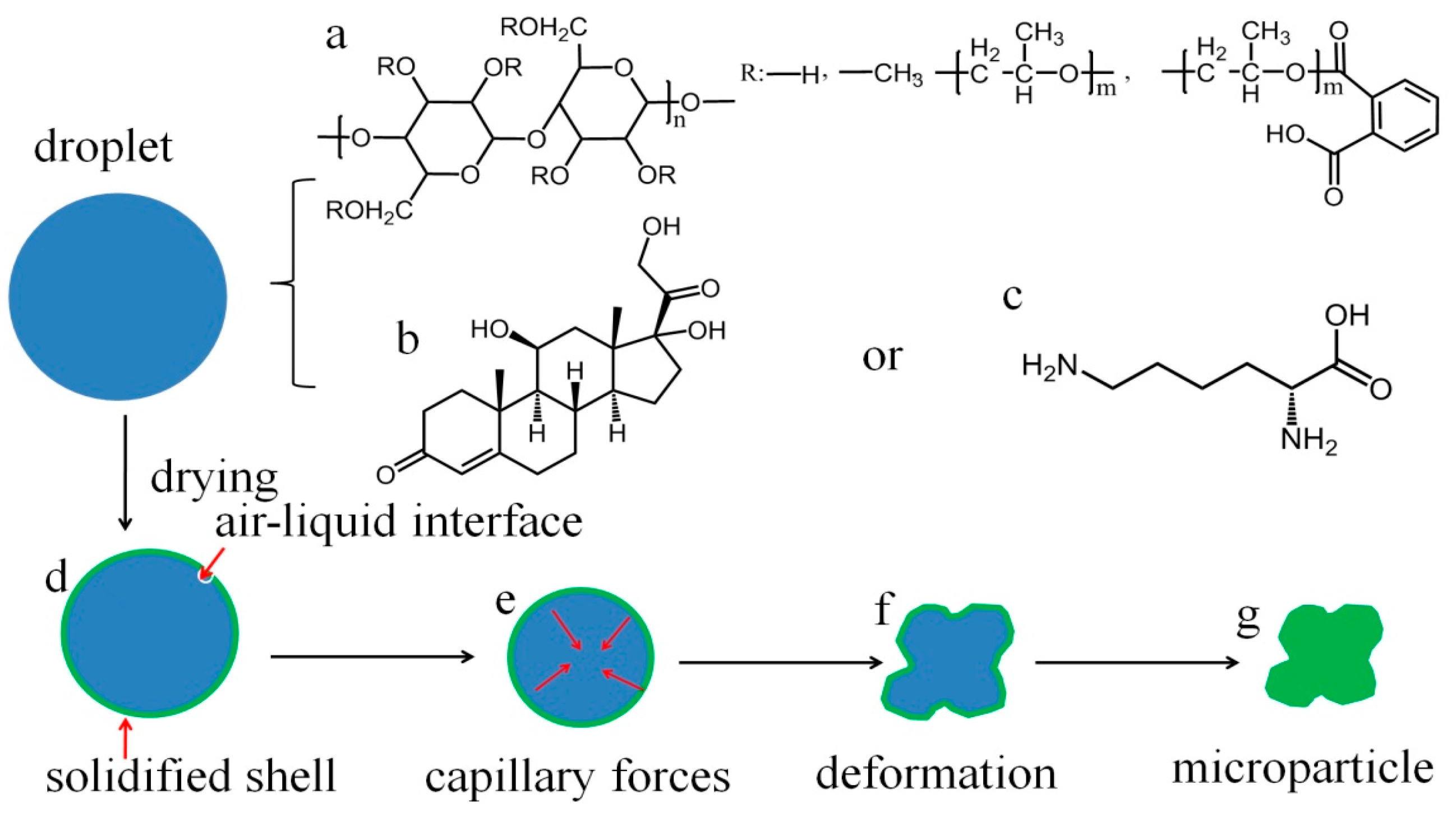
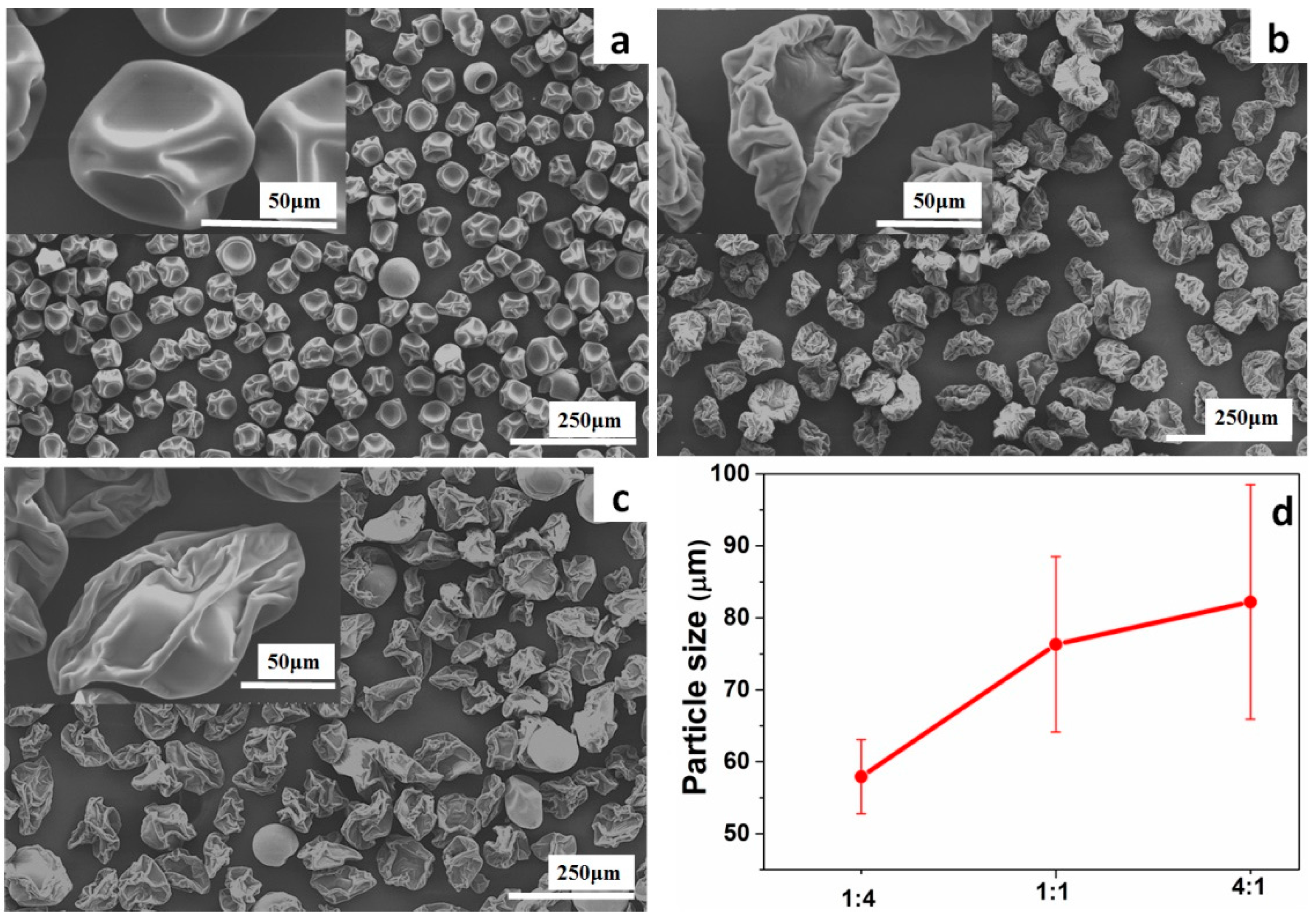
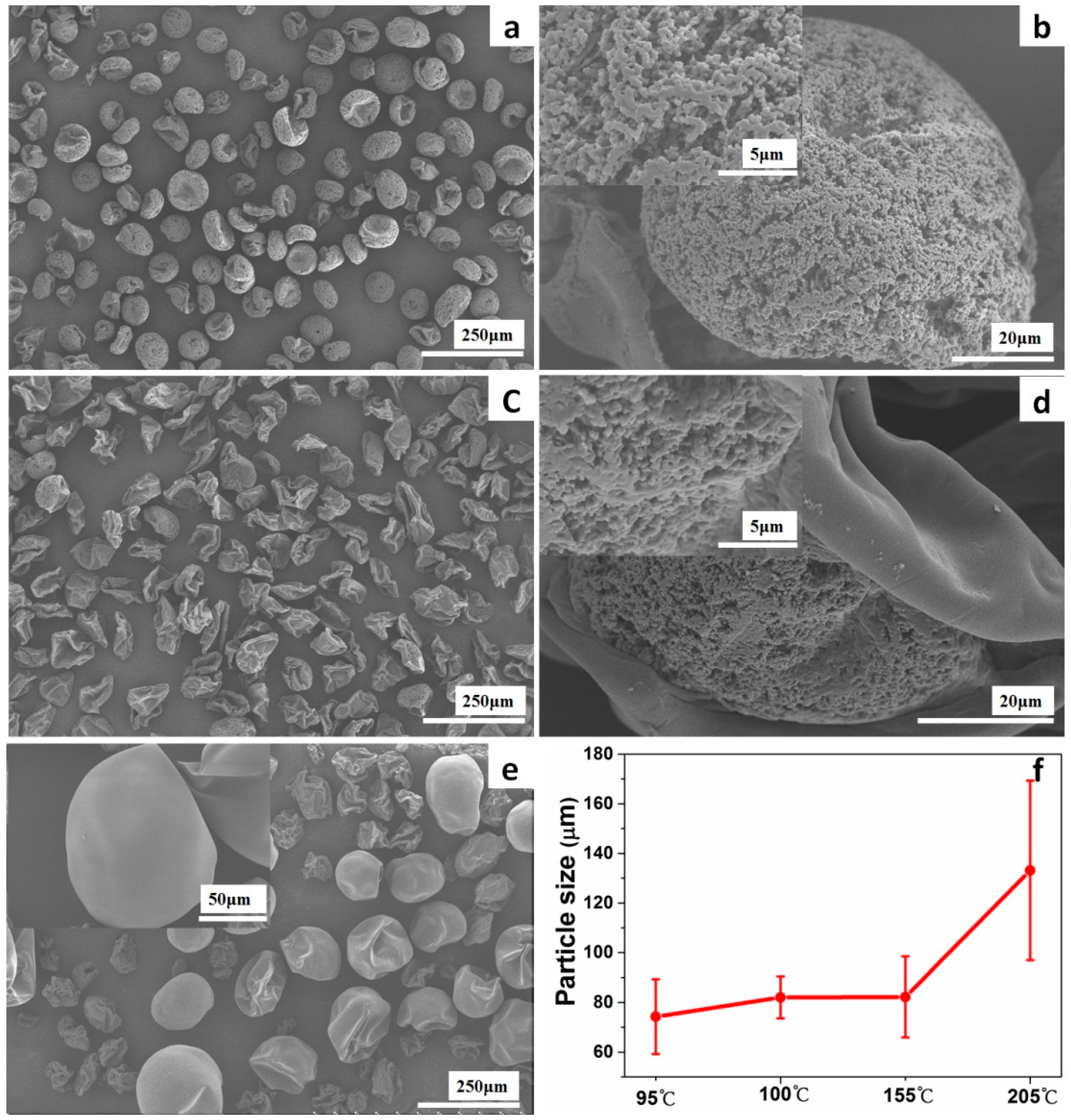
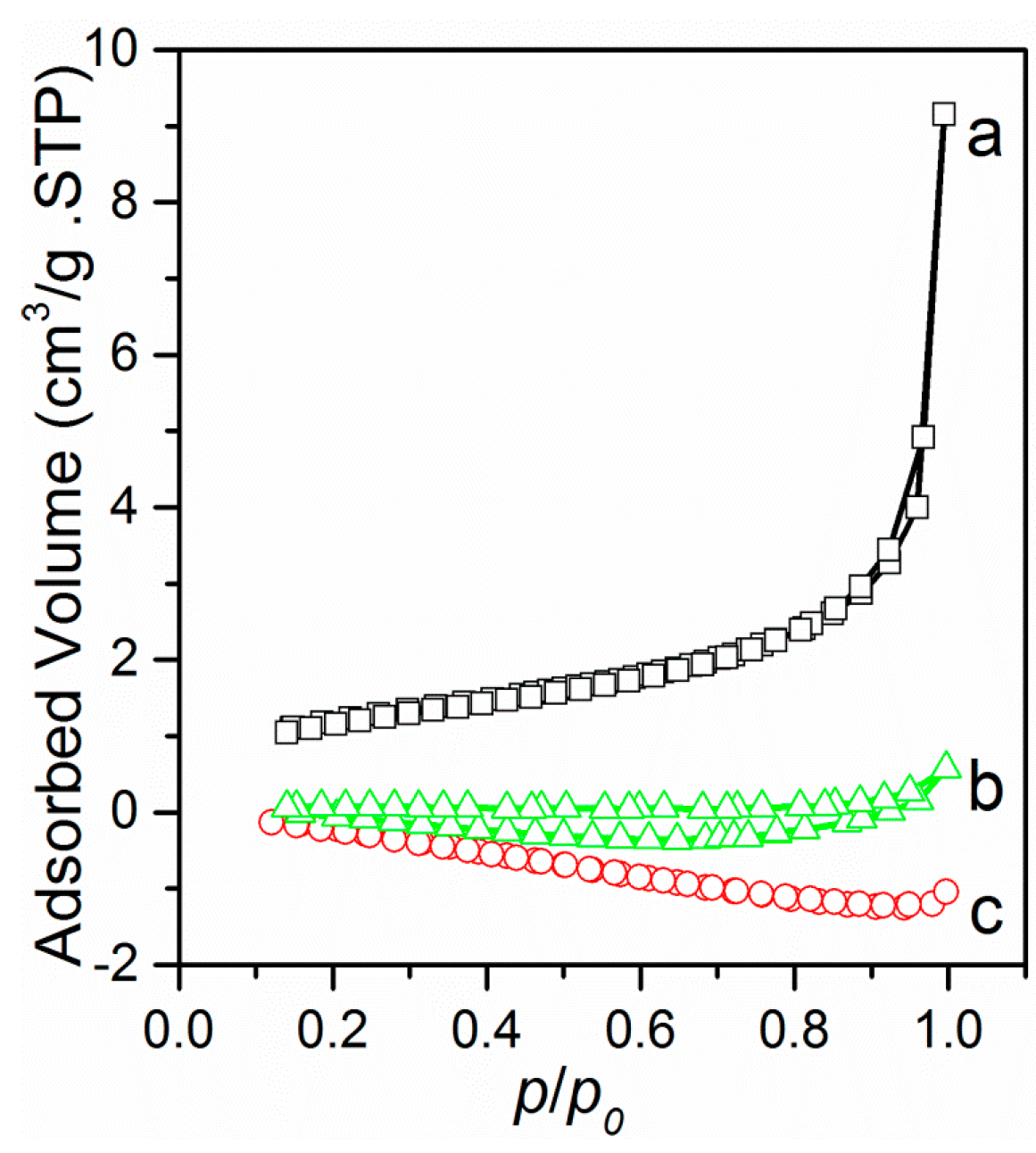
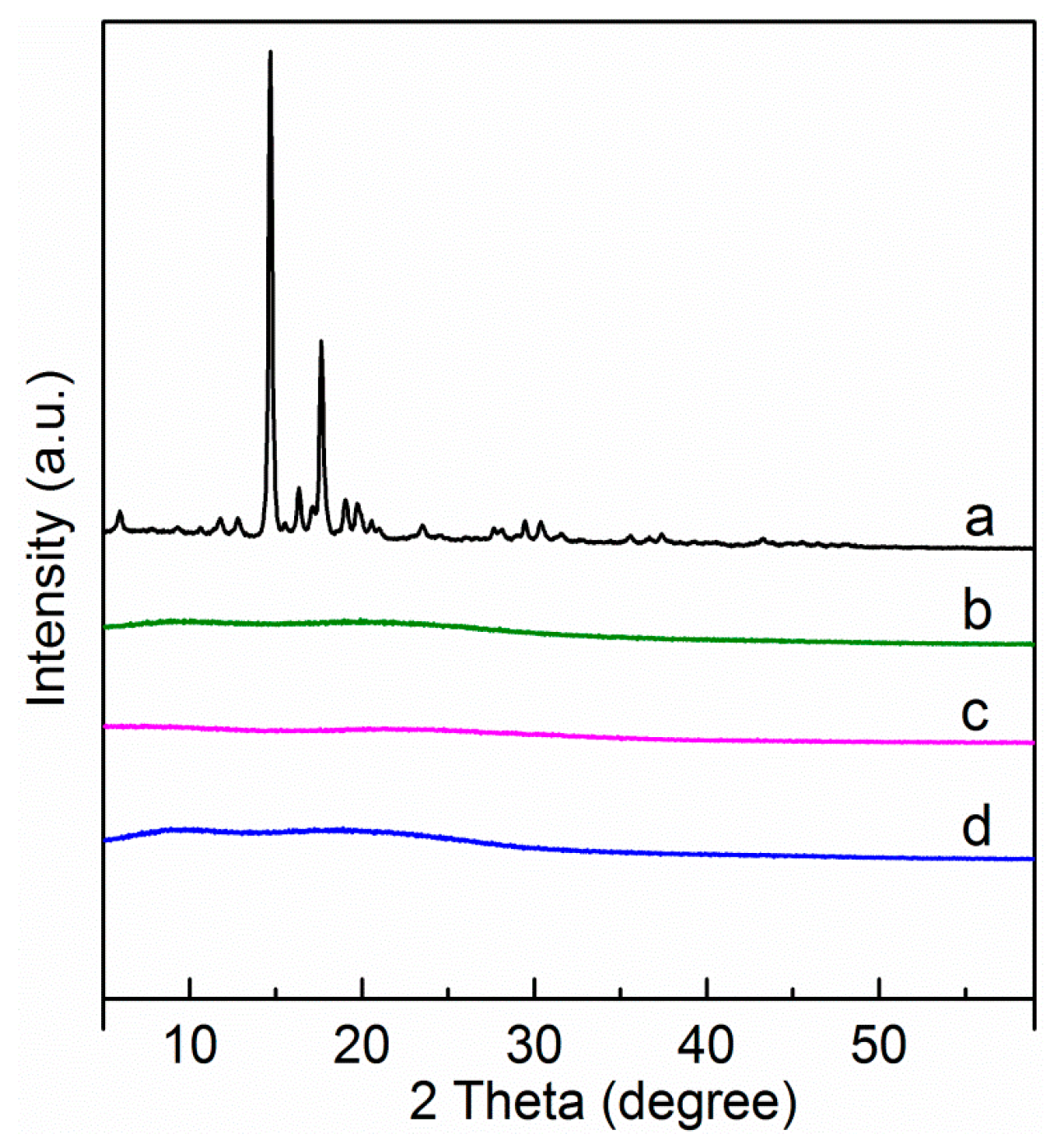
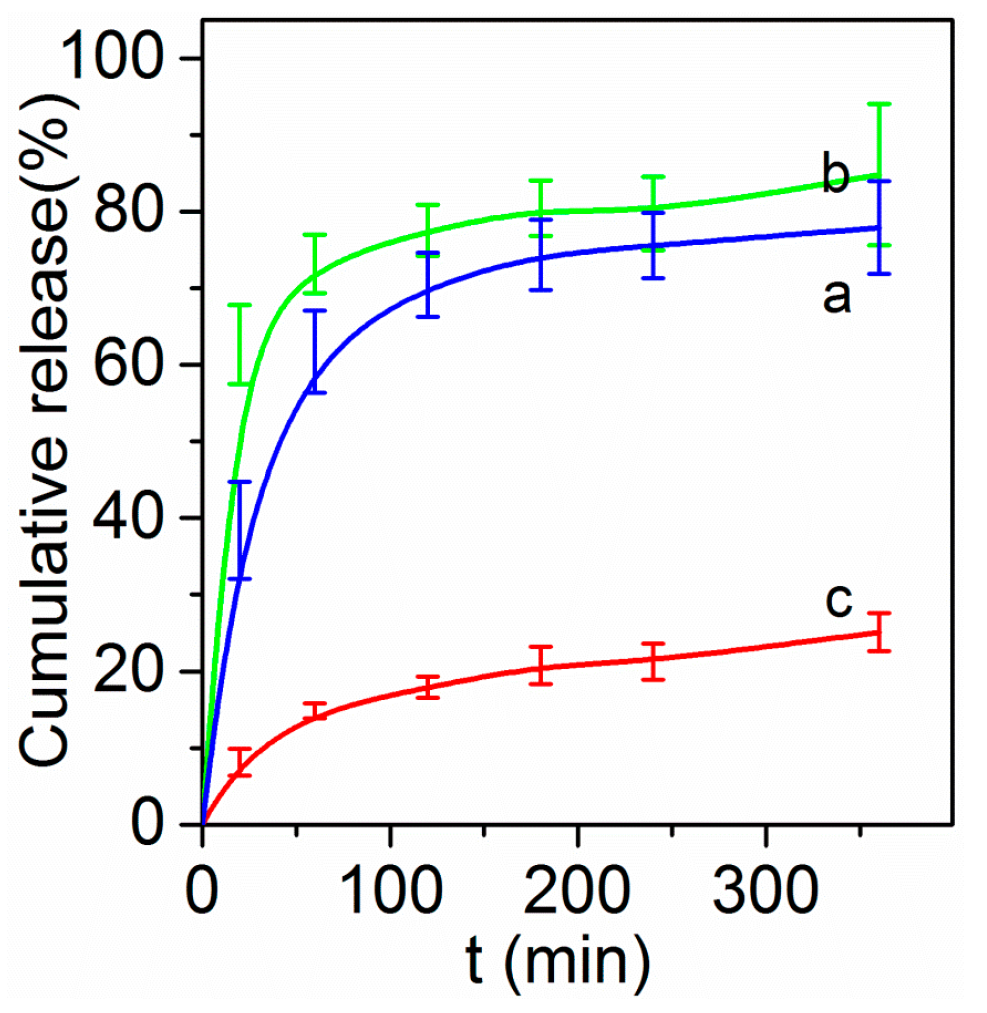
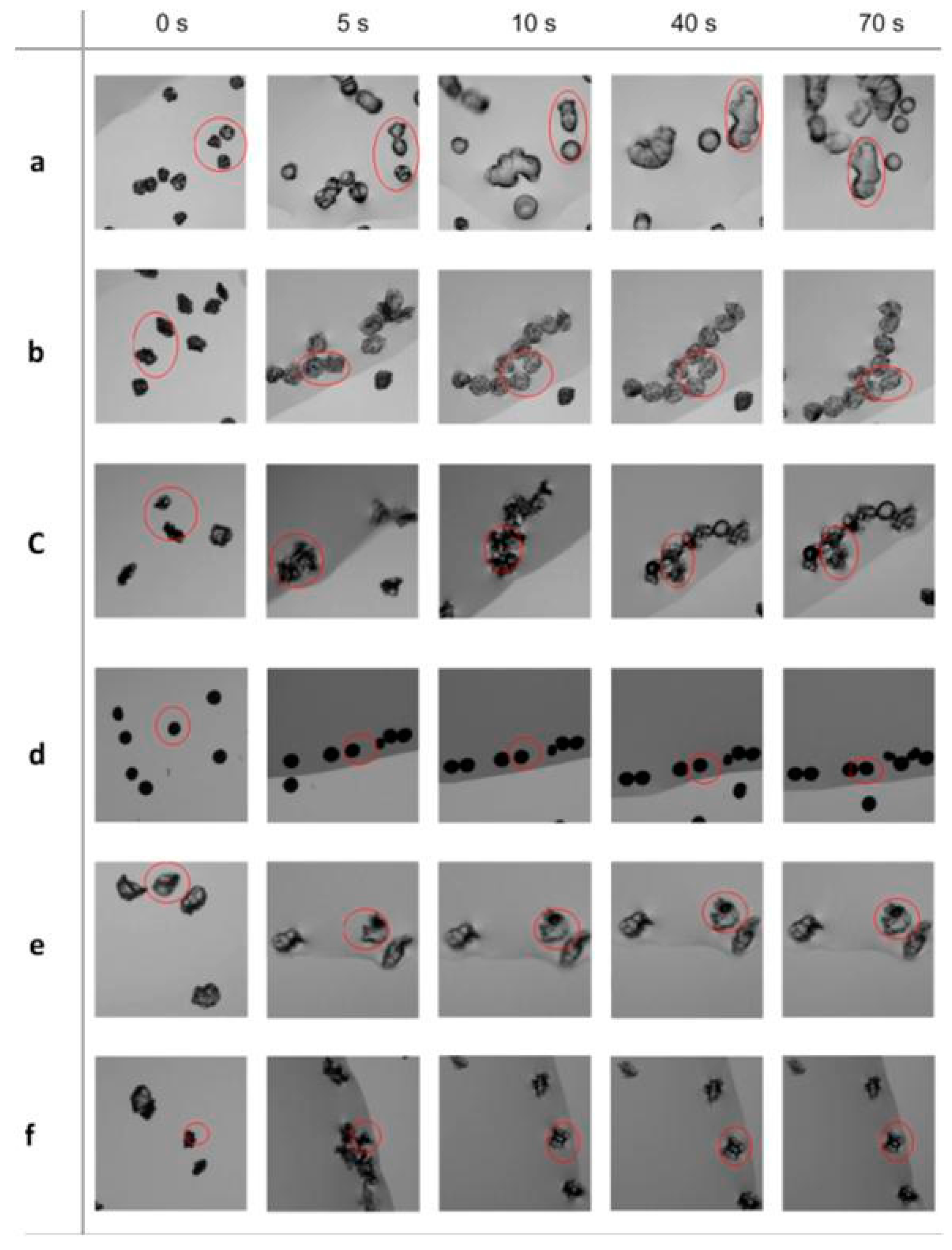
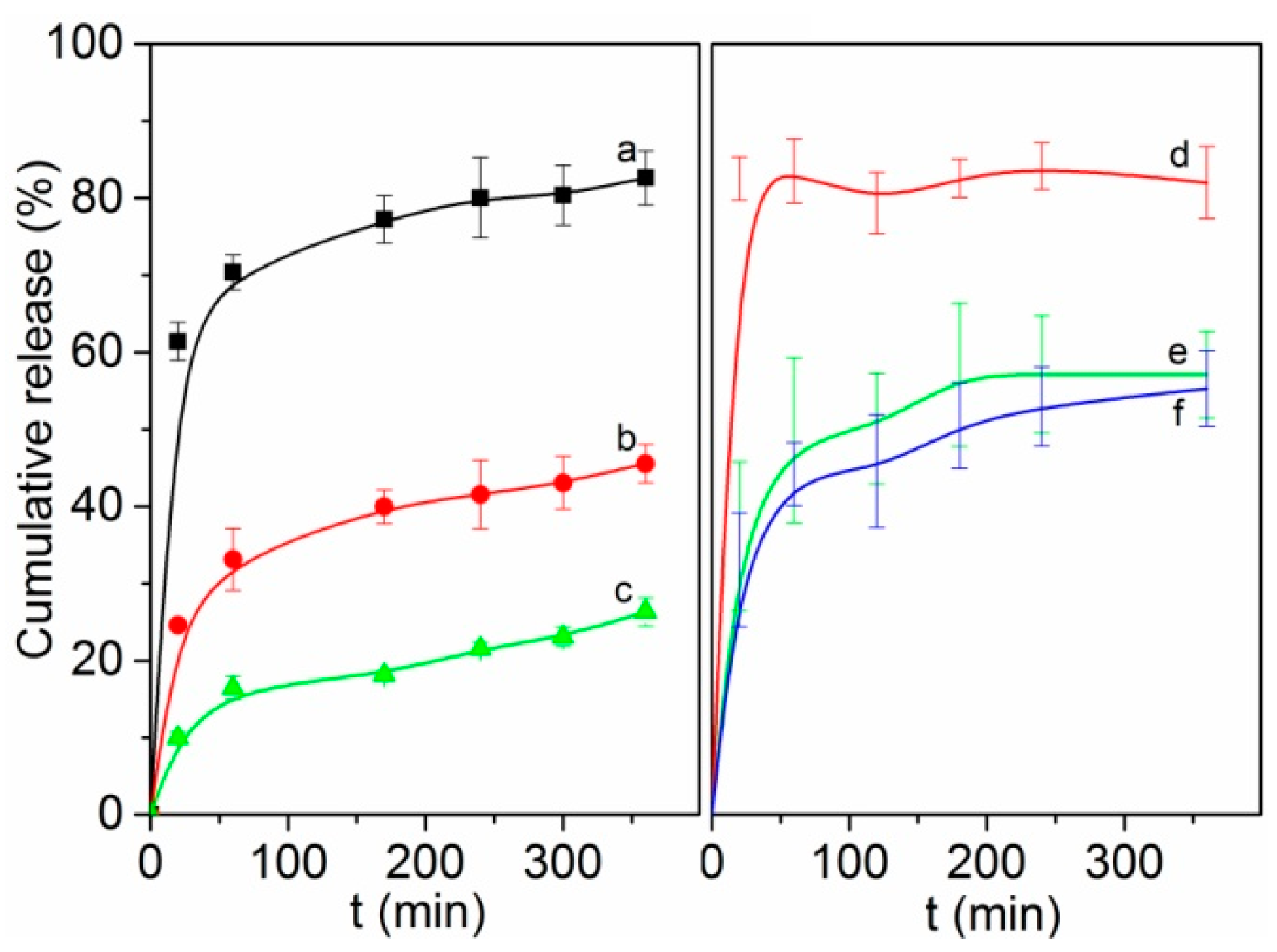
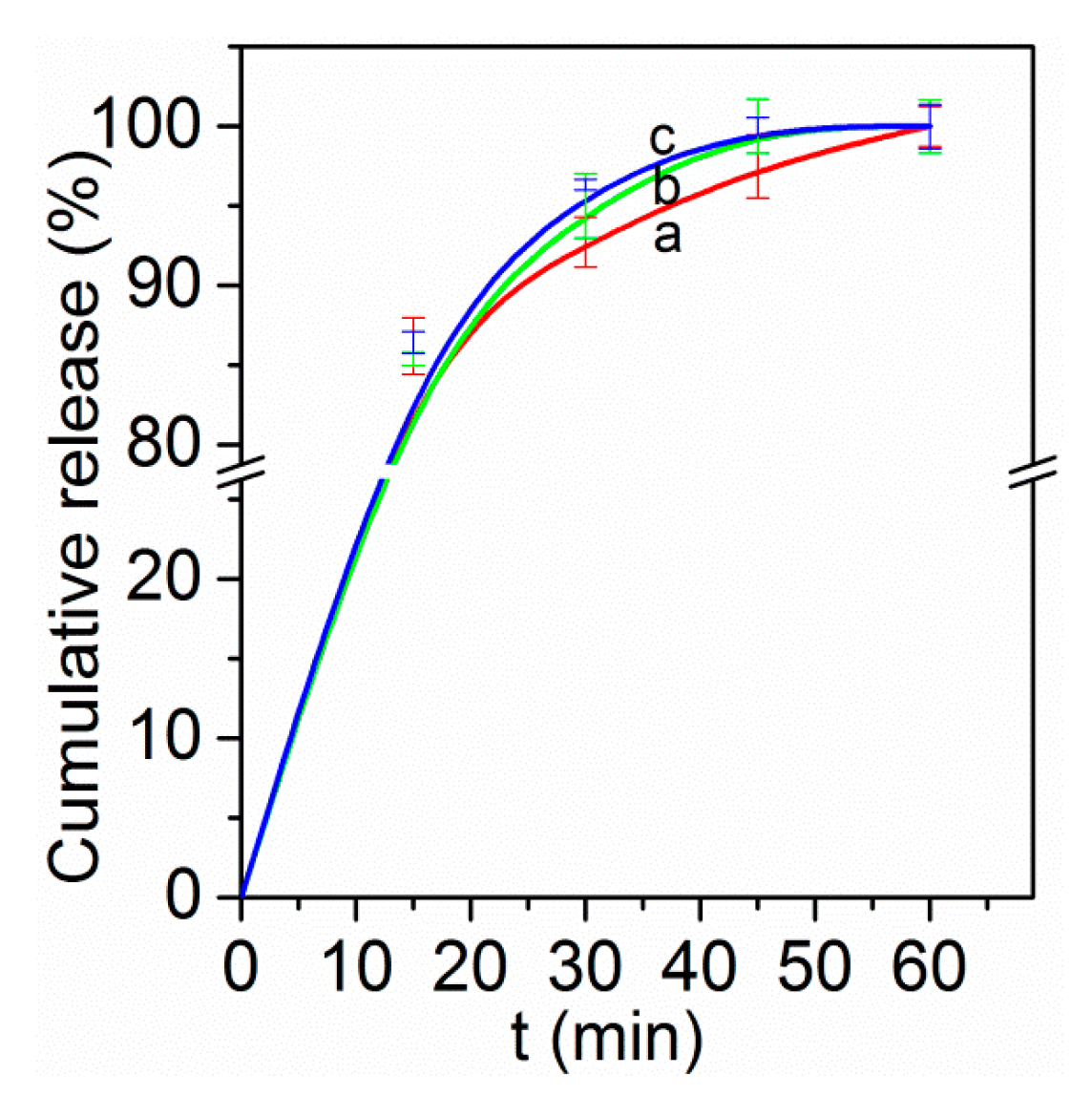
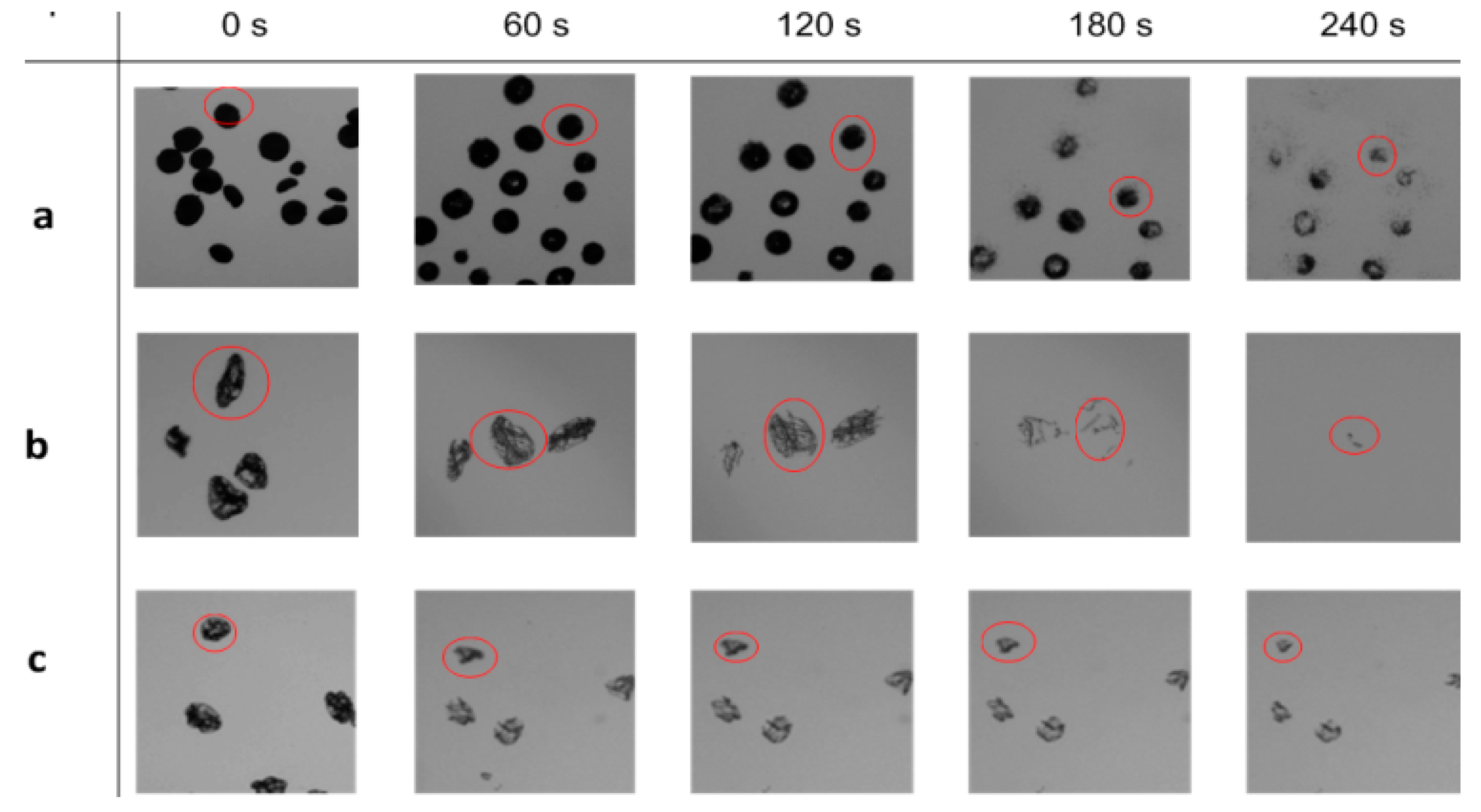
© 2016 by the authors. Licensee MDPI, Basel, Switzerland. This article is an open access article distributed under the terms and conditions of the Creative Commons Attribution (CC-BY) license ( http://creativecommons.org/licenses/by/4.0/).
Share and Cite
Lei, H.; Gao, X.; Wu, W.D.; Wu, Z.; Chen, X.D. Aerosol-Assisted Fast Formulating Uniform Pharmaceutical Polymer Microparticles with Variable Properties toward pH-Sensitive Controlled Drug Release. Polymers 2016, 8, 195. https://doi.org/10.3390/polym8050195
Lei H, Gao X, Wu WD, Wu Z, Chen XD. Aerosol-Assisted Fast Formulating Uniform Pharmaceutical Polymer Microparticles with Variable Properties toward pH-Sensitive Controlled Drug Release. Polymers. 2016; 8(5):195. https://doi.org/10.3390/polym8050195
Chicago/Turabian StyleLei, Hong, Xingmin Gao, Winston Duo Wu, Zhangxiong Wu, and Xiao Dong Chen. 2016. "Aerosol-Assisted Fast Formulating Uniform Pharmaceutical Polymer Microparticles with Variable Properties toward pH-Sensitive Controlled Drug Release" Polymers 8, no. 5: 195. https://doi.org/10.3390/polym8050195





